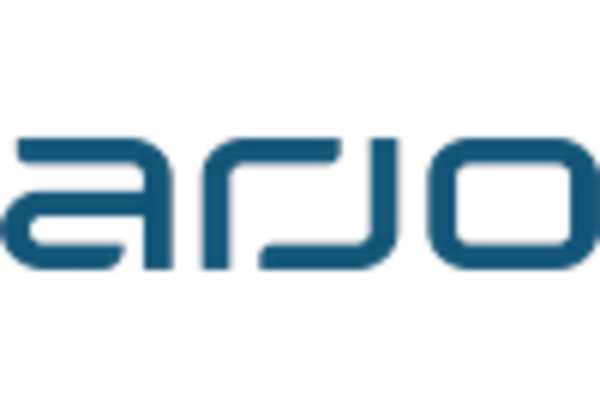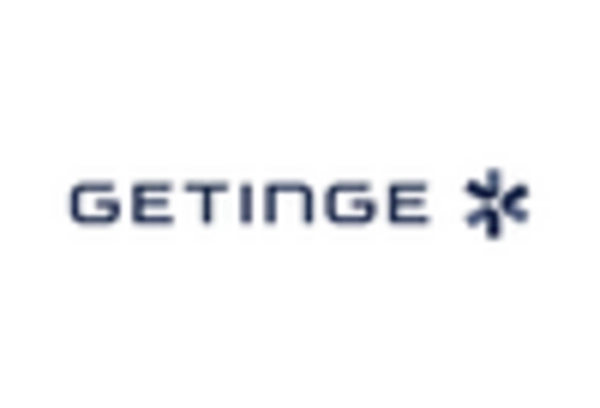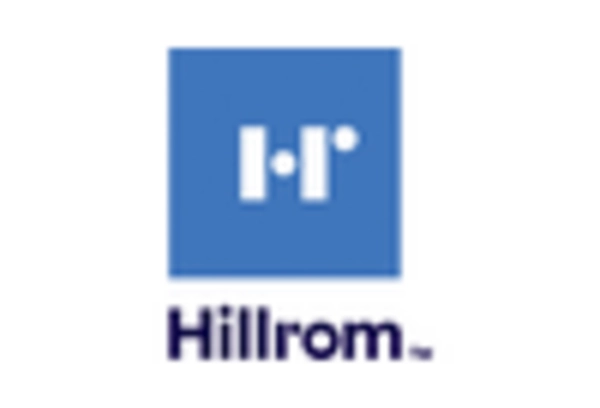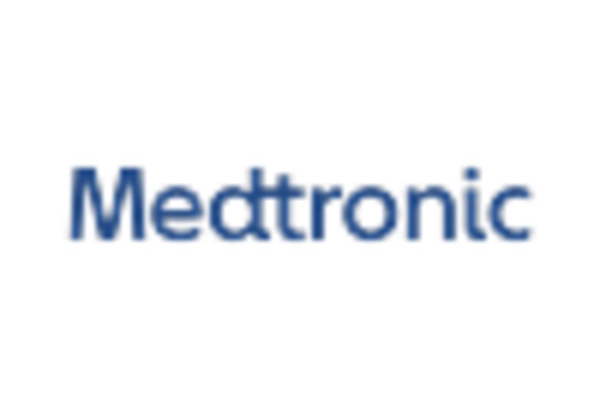Rising Geriatric Population
The increasing geriatric population in the US is a pivotal driver for the automated hospital-beds market. As individuals age, they often require more medical attention and long-term care, leading to a higher demand for advanced hospital equipment. According to the US Census Bureau, the population aged 65 and older is projected to reach 80 million by 2040, which represents a substantial market opportunity. Automated hospital beds, designed to enhance comfort and facilitate patient mobility, are becoming essential in healthcare facilities catering to this demographic. The need for specialized care in nursing homes and assisted living facilities further propels the demand for these beds, as they can significantly improve patient outcomes and operational efficiency. Thus, the rising geriatric population is likely to continue influencing the growth trajectory of the automated hospital-beds market.
Shift Towards Home Healthcare
The shift towards home healthcare is emerging as a significant driver for the automated hospital-beds market. As more patients prefer receiving care in the comfort of their homes, the demand for home-compatible automated beds is increasing. This trend is supported by advancements in telehealth and remote patient monitoring, which facilitate effective home care management. The home healthcare market is projected to grow at a CAGR of approximately 20% over the next few years, indicating a robust demand for automated solutions that cater to this segment. Automated hospital beds designed for home use not only enhance patient comfort but also provide caregivers with essential tools to manage care effectively. Consequently, the growing preference for home healthcare is likely to propel the automated hospital-beds market forward.
Government Initiatives and Funding
Government initiatives aimed at improving healthcare infrastructure are playing a vital role in the growth of the automated hospital-beds market. Various federal and state programs are providing funding to healthcare facilities for upgrading their equipment, including hospital beds. The US government has allocated billions of dollars to enhance healthcare services, particularly in underserved areas. This financial support encourages hospitals to invest in advanced technologies, including automated beds that improve patient care and operational efficiency. As healthcare providers respond to these initiatives, the automated hospital-beds market is expected to expand, driven by increased investments in modern healthcare solutions. The alignment of government policies with market needs suggests a promising outlook for the industry.
Increased Focus on Infection Control
Infection control remains a critical concern in healthcare settings, driving the demand for automated hospital beds. the automated hospital-beds market is witnessing a shift towards beds that incorporate antimicrobial materials and easy-to-clean surfaces. These features are essential in minimizing hospital-acquired infections (HAIs).. The Centers for Disease Control and Prevention (CDC) reports that HAIs affect 1 in 31 hospital patients on any given day, underscoring the need for effective infection control measures. Automated beds that facilitate better hygiene practices can significantly reduce the risk of infections, making them a preferred choice for hospitals. As healthcare facilities prioritize patient safety and infection prevention, the automated hospital-beds market is likely to benefit from this heightened focus on cleanliness and safety protocols.
Technological Integration in Healthcare
The integration of advanced technologies in healthcare is significantly impacting the automated hospital-beds market. Innovations such as IoT connectivity, remote monitoring, and smart bed features are transforming patient care. Hospitals are increasingly adopting automated beds equipped with sensors that monitor vital signs and adjust positions accordingly, enhancing patient comfort and safety. The market for smart healthcare technologies is expected to grow at a CAGR of over 25% in the coming years, indicating a robust demand for automated solutions. This technological evolution not only improves patient outcomes but also streamlines hospital operations, making it a crucial driver for the automated hospital-beds market. As healthcare providers seek to enhance their service offerings, the demand for technologically advanced hospital beds is likely to rise, reflecting a broader trend towards digital health solutions.

















Leave a Comment